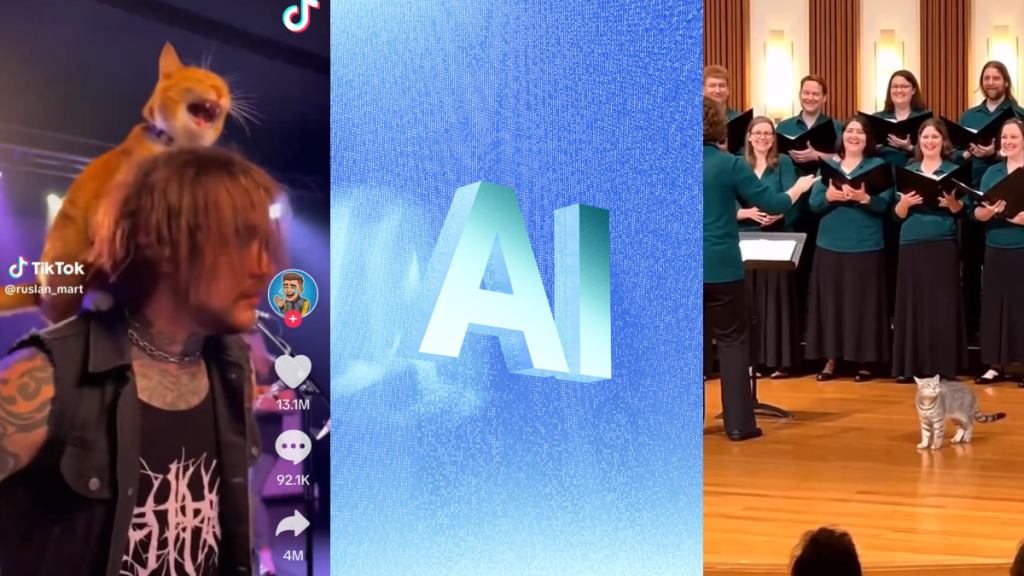A recent trend has emerged on social media platforms, featuring musicians accompanied by animals in unusual and often humorous situations. One such video, which has garnered 13 million likes and 113 million views on TikTok, appears to show a metal singer being climbed on by a cat. While the video may seem authentic at first glance, closer inspection reveals inconsistencies that suggest it is actually generated by artificial intelligence.
The cat’s movements in the video are unnatural and defy physics, a common trait of AI-generated content. Similarly, a video of a cat accompanying a choir on Facebook, which has received nearly 3 million likes, exhibits similar inconsistencies, such as the singers’ mouths and the cat’s meows not being in sync.
These videos are part of a larger trend of AI-generated content on social media, which has become increasingly prevalent in recent times. Previous trends have included fake surveillance footage of cute animals, uncanny valley babies, and humans cleaning whales with heavy machinery. The fact that such videos can garner significant attention and engagement highlights the need for social media users to be aware of the potential for AI-generated content.
The use of AI to generate realistic but fake videos has significant implications for the way we consume and interact with online content. As the technology continues to evolve and improve, it is likely that we will see more sophisticated and convincing AI-generated videos in the future. This raises important questions about the authenticity and trustworthiness of online content, and the need for social media platforms to develop effective methods for detecting and labeling AI-generated content.
The proliferation of AI-generated content on social media also underscores the importance of critical thinking and media literacy in the digital age. As users, it is essential to be aware of the potential for fake or manipulated content, and to approach online information with a healthy dose of skepticism. By doing so, we can promote a more informed and discerning online community, and reduce the spread of misinformation and disinformation.
